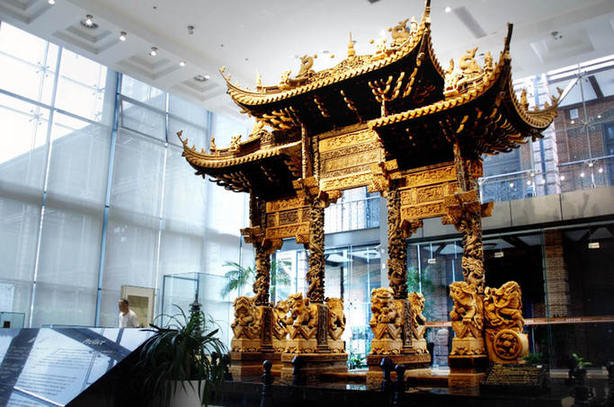The Xujiahui Legacy
 |
|
The wooden archway of the Tou-Se-We Orphanage built in 1913. Photos by Ben Daochun |
“The First Cathedral of the Far East”
Xujiahui Cathedral, or St. Ignatius Cathedral, is walking distance from the park. Built from 1904 to 1910, it is in unequivocally Western style, breaking from the predominant trend of the time of intermingling architectural features of both the East and West. With a red-brick facade, white columns and gray roof, the stately twin-spired Gothic Roman Catholic cathedral was the highest building in the region until the 1920s. It remains the most prominent landmark in Xujiahui today.
Orphans to Artists
Tou-Se-We, an extremely rural appellation meaning Earth Dune Cove, became an incubator for European arts. In 1864, a Jesuit orphanage for boys was established here. To ensure their young charges would be financially independent in adulthood, the facility ran classes in practical skills including painting, sculpture, woodwork, and printing. The students’ artworks were sold across the country and overseas.
To produce religious paintings, the orphanage opened a fine arts school, where thousands of orphans received training in European painting. Many of them later became the most recognized names in China’s art circles. The school was hence lauded as “the cradle of European painting in China.” Several prominent artists such as Ren Bonian, Liu Haisu and Xu Beihong taught here.
Xu Baoqing, a former protégé of the Tou-Se-We Orphanage, later founded the Shanghai School of Boxwood carving – listed as a national intangible cultural heritage in 2008.
In 1913, under the instruction of German Jesuit Aloysis Beck, dozens of the best skilled apprentices at the orphanage completed a wooden archway, 5.8 meters tall and 5.2 meters wide, after a year of hard work. The elaborately engraved design features dragons curling among clouds and the Eight Immortals of Chinese folklore. This artwork was presented at three sessions of the World Expo, and has traveled the world on exhibition. It is now the centerpiece of the Tou-Se-We Museum collection.
